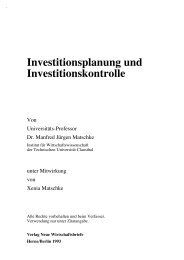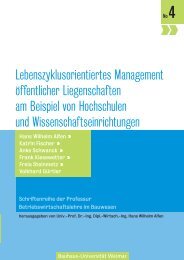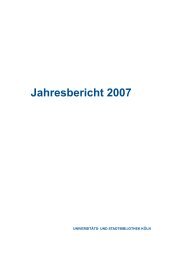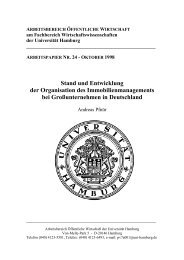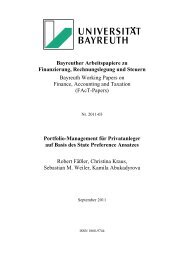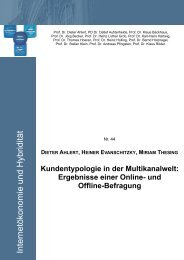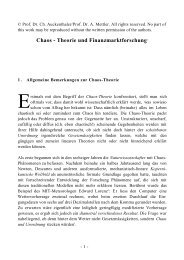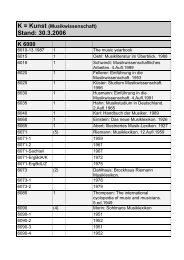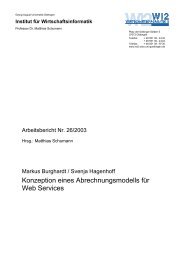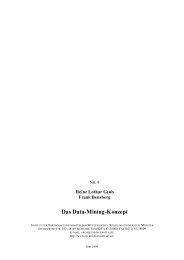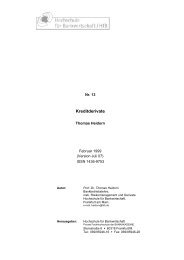FRANCE The
FRANCE The
FRANCE The
You also want an ePaper? Increase the reach of your titles
YUMPU automatically turns print PDFs into web optimized ePapers that Google loves.
3. Recent trends in policies<br />
As already mentioned, the trends in labour market attachment of<br />
older workers have spurred political debate and proposed changes in<br />
strategy (Arbejdsministeriet, 1996; <strong>The</strong> Government, 2002;<br />
Ministry of Social Affairs, 2002). <strong>The</strong>re are three main elements in<br />
this discussion:<br />
• <strong>The</strong> increased demands on the Danish welfare state stemming<br />
from the expected growth in the older age-groups whose need for<br />
caring and health services is higher than average;<br />
• <strong>The</strong> changes in the distribution of income and consumption<br />
between the productive and non-productive parts of the<br />
population leading to discussions about reforms in the public<br />
and private pension systems and the role of the taxation system<br />
in providing incentives to early retirement;<br />
• Concerns about the consequences of the stagnating or falling<br />
supply of labour, both in the short and the longer run. <strong>The</strong> shortrun<br />
concerns for the supply of labour have, of course, been<br />
fuelled by the strong economic upswing and fall of<br />
unemployment on the Danish labour market since 1994.<br />
<strong>The</strong> remainder of this article will focus on the last of the abovementioned<br />
points concerning the more direct relation between the<br />
ageing of the population and changes on the labour market and in<br />
labour market policies.<br />
Given the wide range of potential or perceived consequences of the<br />
ageing population, ideas about “active ageing” have been developed in<br />
a number of different policy areas.<br />
In relation to consequences for the welfare state, “active ageing” of<br />
course implies strategies to keep older persons healthy, selfsupporting<br />
and living in their own homes for as long as possible.<br />
With respect to the labour market, “active ageing” has led to<br />
considerations concerning:<br />
• the economic incentives to early or flexible retirement;<br />
• increased emphasis to upgrade the qualifications of the older<br />
parts of the workforce (including the elderly unemployed);<br />
• concerns about how to change the attitudes of employers<br />
towards the older persons in the workforce.<br />
In the following section a more detailed survey is given of the recent<br />
trends in policies to influence the situation of older workers on the<br />
labour market.<br />
Spring 2003 | European Employment Observatory Review 69<br />
Trends<br />
3.1 Policies concerning the retirement age and early<br />
exit<br />
Since 1970, all persons above 67 years of age have been eligible for<br />
the public old-age pension, though the amount paid depends on<br />
whether the recipient has supplementary work-income. From 1999<br />
the retirement age has gradually been reduced to 65 years. <strong>The</strong><br />
change will be fully effective by 2004.<br />
Retirement at 65 is not compulsory, but marks the age from which<br />
one qualifies for the old-age pension. In the public sector the<br />
maximum retirement age is 70 years. In the private sector there is no<br />
general formal retirement age; in many private firms the compulsory<br />
retirement age is 67 years. Most private or collective pension<br />
schemes permit retirement from the age of 60 years.<br />
For a number of reasons the actual average retirement age in<br />
Denmark is significantly below 65 years of age (cf. section 1). This is<br />
caused by a number of factors including the existence of several<br />
schemes allowing for early retirement from work.<br />
<strong>The</strong> most important of these schemes is the so-called Voluntary<br />
Early Retirement Pay (in Danish: “Efterløn”), which was<br />
introduced in 1979 as a response to the high and rising level of<br />
unemployment in the 1970s. This scheme meant that members of an<br />
unemployment insurance fund aged 60 to 66 years could choose to<br />
retire and receive a public pension defined as a share of the<br />
unemployment benefits. <strong>The</strong> share was 100% of benefits for the first<br />
21 /2 years and then gradually reduced.<br />
It was not a condition that the person was actually unemployed at<br />
the time of retirement, but membership of the unemployment<br />
insurance fund should have lasted for 10 years within the last 15<br />
years. <strong>The</strong> scheme proved very popular – and costly to the state<br />
budget – and it was tightened on a number of occasions in the 80s<br />
and 90s.<br />
<strong>The</strong> rationale behind the Voluntary Early Retirement Pay was both<br />
to allow older unemployed workers to retire in a period of labour<br />
surplus, but also to create job openings for younger persons, when<br />
employed older workers decided to take the opportunity of the early<br />
retirement benefit instead of staying in the job until official pension<br />
age.<br />
In 1987 a part-time pension was introduced which was intended to<br />
allow both wage earners and self-employed persons aged 60-66<br />
Figure 1: Annual growth rate in the number of persons receiving Voluntary Early Retirement Pay, 1990-2001<br />
percentage<br />
10<br />
9<br />
8<br />
7<br />
6<br />
5<br />
4<br />
3<br />
2<br />
1<br />
0<br />
1990 1991 1992 1993 1994 1995 1996 1997 1998 1999 2000 2001<br />
Source: Statistics Denmark



